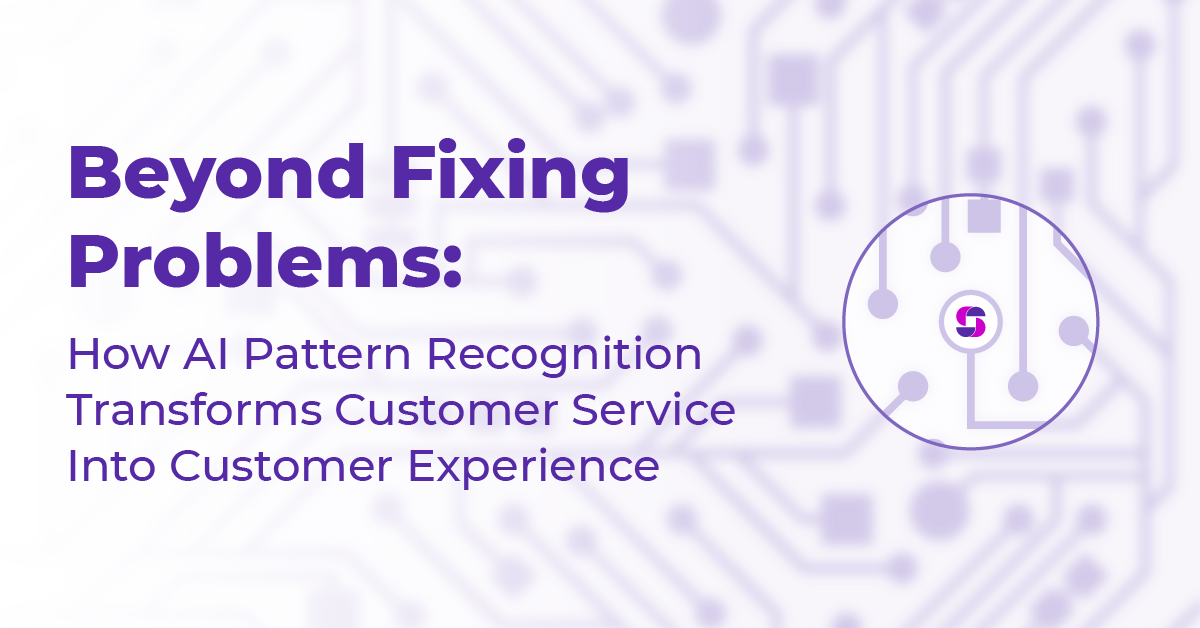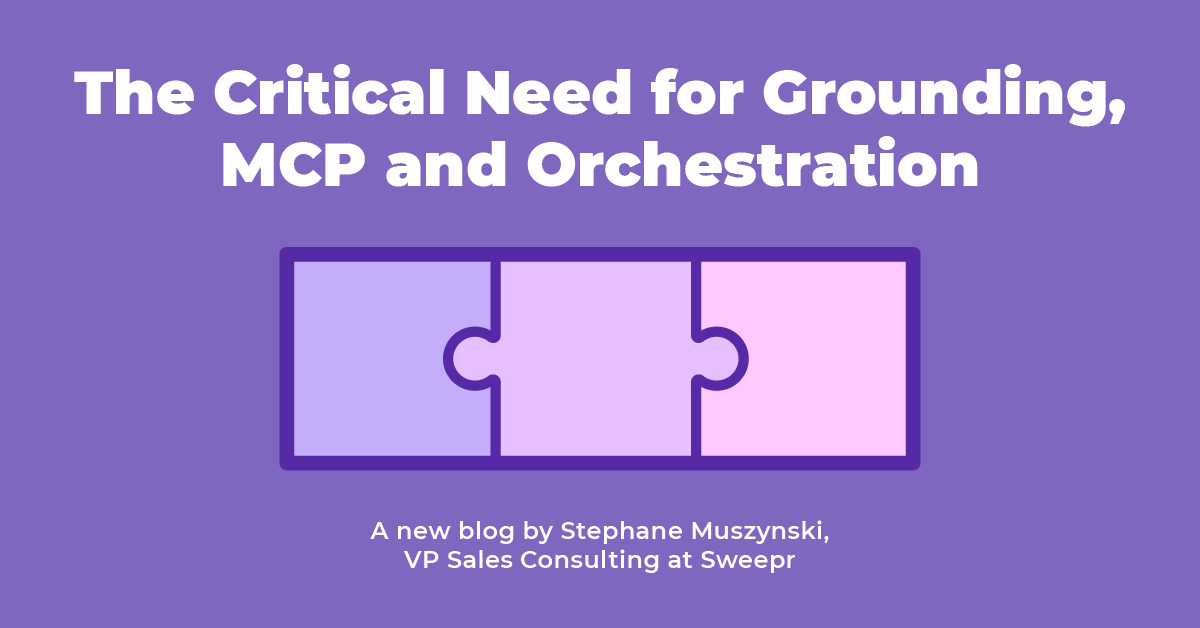On October 6th, Sam Altman stood on stage at OpenAI’s DevDay and told the world something we’ve been telling tier-1 telecom operators for the past two years: the future of customer interaction isn’t about navigating websites or tapping through apps—it’s about having a conversation that gets things done.
OpenAI announced Apps in ChatGPT and AgentKit, tools that let developers build “interactive, adaptive apps that you can chat with”—conversational experiences that understand context, complete tasks autonomously, and meet users exactly where they are. Altman described it as moving from “systems you can ask anything to, to systems you can ask to do anything for you.”
Here’s the thing: This isn’t our roadmap. This is our reality.
What OpenAI Announced (And Why It Matters)
Let me break down what happened at DevDay, because the implications are significant for anyone building customer experiences.
Apps SDK enables developers to build interactive, adaptive applications that live natively inside ChatGPT conversations. Users don’t browse to Spotify’s website to build a playlist—they ask ChatGPT, and Spotify’s app appears contextually within the conversation. No navigation. No friction. Just utility.
AgentKit provides the building blocks for creating autonomous AI workers that can complete complex tasks. Not chatbots that answer questions, but agents that actually get work done—researching options, checking policies, executing transactions, and escalating only when genuinely necessary.
The vision? ChatGPT becomes the “new front door of the internet.” Instead of attention-seeking websites competing for clicks, services appear contextually when users need them. As the folks at Fantasy design agency put it: this is the shift from the attention economy to the utility economy.
With 800 million weekly users and 4 million developers already on the platform, OpenAI just told every enterprise: This is where customer interactions are heading. Build for this future, or get left behind.
This Is Exactly What Sweepr Built
When I read the DevDay announcements, it was like seeing our architecture reflected back at us from the world’s leading AI lab.
Let me spell out the parallel:
OpenAI says: “Build apps users can chat with”
Sweepr built: An agentic platform that subscribers from Telco operators interact with (chat, voice, message,etc) to solve their support issues.
Here’s how Sweepr’s architecture mirrors everything OpenAI just announced:
✓ Conversational interface – No IVR trees, no seven-layer menus, no “press 1 for English.” Just natural language. Subscribers describe their intent; the platform understands.
✓ Contextual understanding – The platform knows who you are, what services you have, your account history, the devices on your network, and the health of your connection. It combines what you’re saying with what it sees technically.
✓ Autonomous task completion – It doesn’t just answer questions. It troubleshoots, resolves issues, adjusts configurations, guides step-by-step repairs, and only escalates when human intervention is genuinely needed. Exactly what OpenAI calls “systems you can ask to do anything for you.”
✓ Multi-LLM foundation – We built Sweepr to be LLM-agnostic from day one. We can leverage OpenAI, yes, but also support Bedrock, Anthropic, and others. Our Sweepr LLM Fabric grounds these powerful models in proven heursitic telco workflows—ensuring accurate, scalable automation.
✓ Turns complex workflows into natural conversation – We took decades of heuristic customer care processes—the decision trees, the troubleshooting guides, the escalation procedures—and turned them into conversational experiences that feel human but scale like software.
The critical difference? We didn’t build for 800 million general users across infinite use cases. We built specifically for the needs of telecom subscribers who want self-serve digital care and don’t want to wait on hold.
Why Vertical-Specific Matters (The Sweepr Advantage)
Here’s what I learned from building and selling Brite:Bill, our first company in the telco space: no matter the use case, the user experience is what one needs to get right.
OpenAI built the platform. Sweepr built the application.
We operate at three layers of specificity:
1. Vertical: Telecom Operators
This isn’t just any industry. It’s complex legacy infrastructure, BSS/OSS systems that date back decades, regulatory requirements that vary by region, and service catalogs that would make your head spin. You can’t just “plug in” ChatGPT and hope for the best.
2. Use Case: Digital Self-Serve Customer Care
Not general conversation. Not entertainment. Not broad Q&A. We focused ruthlessly on one problem: helping subscribers resolve product or service intents without calling the call center. That focus lets us build depth and breadth on that single use case.
3. User: Subscribers Who Don’t Want to Wait on Hold
These are people whose WiFi stopped working, whose billing was wrong, whose smart home devices aren’t connecting. They’re frustrated. They want their problem solved now. They don’t want to chat with AI—they want their service restored and questions answered.
This specificity matters because of what happens in production at scale. When we have deployed with one of our Sweepr customers, they prevent half a million calls in the first year to hit the call center. That’s what happens when you truly understand the problem domain.
Telcos face challenges that generic AI simply can’t address:
- Understanding the interdependency of services (your iP TV to work depends on the WiFi, the gateway, the network, etc all needs working in harmony)
- Accessing diagnostic data from network infrastructure in real-time
- Navigating complex service hierarchies and entitlements
- Balancing automated resolution with graceful escalation when needed
- Meeting regulatory requirements around data privacy and customer communication
Sweepr turned heuristic customer care workflows into agentic experiences that actually resolve issues. The result? Deflected calls, higher CSAT scores, lower operational costs. Not theory—measured outcomes from production deployments.
The data advantage: Two years of production deployment across tier-1 operators means we’ve seen the edge cases, learned from the failures, and refined the system based on millions of real customer interactions. That’s something no generic solution can replicate.
The Architectural Endorsement
OpenAI’s announcement validates three core architectural principles we’ve been betting on since 2017:
1. Conversational interfaces beat traditional UIs for customer service
We knew this when we started. We’d seen it at Brite:Bill, where making bills more intuitive and personalized reduced care calls by millions. The right interface dramatically changes outcomes.
2. Agentic systems can do complex problem-solving ; but…
Traditional IVR systems and chatbots follow rigid decision trees. Agentic platforms understand context, reason about problems, and adapt their approach based on the situation. That flexibility is everything when you’re troubleshooting real-world technical issues. But only if grounded in the right workflows. Otherwise, agentic systems will make a mess out of it.
3. Contextual experiences beat generic apps for user satisfaction
What makes support effective isn’t just having the right answer—it’s delivering it in a way appropriate to the customer. My 75-year-old mother needs different guidance than a technically confident 30-year-old. Both need their problem solved, but the journey looks different.
What we learned building this for telecom:
- Users don’t want to “chat with an AI”—they want their problem solved. The interface should be invisible.
- The best agentic platform doesn’t feel like AI at all. It just feels like good service.
- Trust requires both domain expertise and AI capability. One without the other fails.
The market inflection: OpenAI just told every enterprise “this is the future.” Sweepr already proved it works in production. That’s not theory anymore—it’s reference architecture.
What This Means for the Telecom Industry
If I’m a telco CXO reading about OpenAI’s announcement, here’s what keeps me up at night:
The urgency just increased dramatically.
Customer expectations are about to shift faster than most operators realize. When consumers start experiencing apps inside ChatGPT—when they ask for help and get instant, contextual, useful responses—their tolerance for legacy customer care experiences will evaporate.
The gap between “AI-powered care” and “press 1 for billing, press 2 for technical support, press 3 to speak with an agent… please listen to all options as our menu has changed…” is about to become impossible to ignore.
First-mover advantage compounds:
Sweepr’s partners can already test agentic while using the heuristic platform. We work with our telco clients to accompany them on their AI journey. While OpenAI’s announcement will have competitors scrambling to “add AI” to their customer care strategy, our partners can already be testing, scaling, and measuring ROI.
This is the opportunity to learn which types of issues resolve best through conversation, which customer segments adopt digital care fastest, and how to optimize the handoff between automated resolution and human intervention. That operational knowledge is invaluable.
The question for telco executives:
Will you wait while competitors deploy ChatGPT-quality experiences, knowing your customers are experiencing those same interfaces everywhere else in their digital lives?
Or will you deploy proven agentic care that’s already handling millions of conversations, already integrated with telecom infrastructure, already delivering measurable business outcomes?
There’s a broader point here about the future of software that I think about often. At Brite:Bill, we learned that transforming customer experiences requires making people feel that a service is uniquely personalized to their needs. That became the impetus for Sweepr.
What OpenAI demonstrated at DevDay is that this principle—contextual, conversational, adaptive experiences—is becoming the new standard across the entire software industry. It’s not just customer care. It’s how people will interact with all digital services.
The companies that understand this shift first, that build for this future now rather than waiting, will capture disproportionate advantage.
The Future Is Agentic (And It’s Already Here)
So, thank you, Sam, for the endorsement.
While the world watches OpenAI’s DevDay demos and reads breathless coverage about what’s coming, tier-1 telecom operators are already living this future with Sweepr. Their subscribers are getting help through natural conversation. Their call centers are seeing measurably reduced volume. Their customer satisfaction scores are improving.
OpenAI showed what’s possible. Sweepr showed what’s profitable in the telco.
The agentic era isn’t coming to telecom—it’s already here.
The technology works. The business case is proven. The customer adoption is real.
Want to discuss how Sweepr can transform your digital support experience?
The teams at TELUS, eir, and other tier-1 operators have already seen the impact. Let’s talk about what it could mean for your subscribers—and your operational costs.

